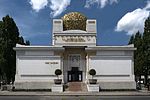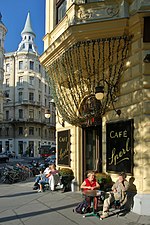Theater an der Wien

The Theater an der Wien is a historic theatre in Vienna located on the Left Wienzeile in the Mariahilf district. Completed in 1801, the theatre has hosted the premieres of many celebrated works of theatre, opera, and symphonic music. Since 2006, it has served primarily as an opera house, hosting its own company. Although "Wien" is German for "Vienna", the "Wien" in the name of the theatre is actually the name of the Wien River, which once flowed by the theatre site; "an der Wien" means "on the banks of the Wien". In modern times, the river has been covered over in this location and the covered riverbed now houses the Naschmarkt, an open-air market. The theatre is operated in cooperation with Vereinigte Bühnen Wien (VBW) which also operates the Raimund Theater and the Ronacher.
Excerpt from the Wikipedia article Theater an der Wien (License: CC BY-SA 3.0, Authors, Images).Theater an der Wien
Papagenogasse, Vienna Laimgrube (Mariahilf)
Geographical coordinates (GPS) Address External links Nearby Places Show on map
Geographical coordinates (GPS)
| Latitude | Longitude |
|---|---|
| N 48.199583333333 ° | E 16.363888888889 ° |
Address
Theater an der Wien
Papagenogasse
1060 Vienna, Laimgrube (Mariahilf)
Austria
Open on Google Maps








